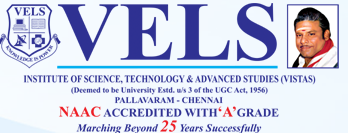To make the institute an epitome of excellence in higher education by effectively providing high quality education and rigorous training to students in multiple streams of choice with ample scope for all round development to make them excel in their profession for betterment of the society.
Programme Outcomes for School of Mass Communication:
The Mass Communication Programme prepares students to be able to do the following:
- PO1: To demonstrate effective speaking, effective writing and listening skills for communication in personal, public, and media areas.
- PO2: To demonstrate the ability to observe events, gather information, write news reports and news releases, report on events, and edit other people’s writings.
- PO3: To demonstrate the ability to understand the media critically and recognize how media shapes and is shaped by politics, society, culture, economics and daily lives.
- PO4: To demonstrate the ability to recognize the power of persuasion and ethical responsibilities of communicators in communication at all levels.
- PO5: To demonstrate an understanding of the roles of communication in fostering interaction and interdependence across gender, race, and culture.
- PO6: To demonstrate the ability to apply communication theories to analyze contemporary problems.
- PO7: To demonstrate an understanding of the history, development, and practice of the print media, electronic media, and the new media.
Programme Specific Outcomes (PSO) for B.Sc. Animation:
Students who graduate with a Bachelor of Animation will
- PSO1: Obtain a significant knowledge on fundamental and advanced aspects of interactive websites, mobile platforms, and other methods including motion graphics (animation), video and informational graphics.
- PSO2: Gain in-depth knowledge on designing and developing websites.
- PSO3: Gain proficiency in techniques of 2D and 3D softwares.
- PSO4: Grasp the fundamental concepts of video editing with composition.
- PSO5: Gain insight into the various aspects of script writing, story board, art direction and editing.
- PSO6: Enter as 2D artist, 3D Modeler, VFX Artist, Storyboard Designer, Graphic Designer, Web Designer and Game Designer.
Course objective: After completing this course, students will be able to define and identify animation as a particular form of visual communication and also will be able to identify the major technological developments and aesthetic movements in the history of animated filmmaking.
Course Outcome
At the end of the course, learners will be able to:
- CO1: It begins with an introduction to film history, It also provides a discussion on experimental animation and abstract cinema.
- CO2: Provides an overview of the evolution of animation , and how animation came into existence.
- CO3:.The process of animation techniques developed with various equipment and how the process was performed.
- CO4:.The animation techniques such as cell animation, classic characters, cut out animation, stop-motion effects, puppet stop motion, pixilation, optical printing, vector / key framed animation, sand animation, silhouette animation, pin-screen animation, Chinese shadow puppetry and rotoscope techniques are illustrated which would be helpful for creating clear and good animation.
- CO5: The information about how animation was developed in India, It also deals with the growth of Indian animation companies and studios, it discusses the emerging trends in Indian animation industry and outsourcing demands. It helps them to understand how great animators helped to improvise animation to Indian directors.
Course Outcome
At the end of the course, learners will be able to:
- CO1: Have a very good knowledge of films, relationship of film and other arts, film and music,film and environment arts
- CO2: Gain knowledge about –media films and folk media, film in theater
- CO3: Have detailed understanding about- history of world cinema, narrative form of linear perspective and non linear perspective, genres in association with melodrama
- CO4: Understand the establishment of film practices and its basic Techniques, semiotic Analysis of its codes Factors Motivating such standardization,
- CO5: Have a thorough knowledge of Film making- production system of Hollywood film method overview from lumiere brother and Griffith movies.
- CO6: Gain knowledge about the history of Indian cinema, whole Indian and regional cinema with its history and development, cinema movements like phalke
- CO7: Detail about Indian new wave cinema pioneers of Indian cinema namely Ritwik Ghatak,Satyajit Ray
- CO8: Gain knowledge about mis-en scene, the framed image the diachronic shot, sound, image, Film visual
